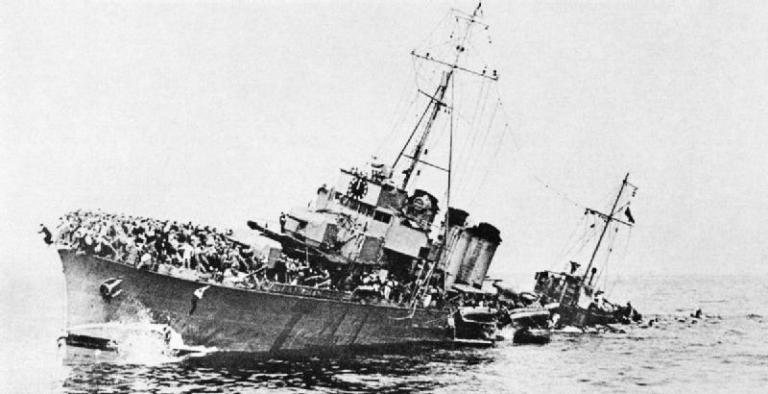
(Wikimedia Commons public domain)
We went to see the film Dunkirk today. In IMAX (which I recommend, if at all possible) at Jordan Commons.
Perhaps it’s partly because I’ve been thinking a lot about the Second World War this summer — e.g., we took a trip to Normandy back in late May, I read Last Hope Island a few weeks ago, and I just finished a book by Wolfgang Benz titled Der deutsche Widerstand gegen Hitler [“The German Resistance against Hitler”] — but I liked Dunkirk.
Some have dismissed the film as “cold.” I can understand that, but I think I would prefer “understated” or “lean” or “unsentimental” — which may actually make it, in a sense, more powerful. There is, for instance, very little talking. Another review that I’ve come across faults it as “overwhelmingly guy-centric,” but that seems obviously unfair. It was the British Expeditionary Force of 1940 that was evacuated from Dunkirk, not an exceptionally large co-ed beach volleyball party. Was Christopher Nolan really supposed to introduce a romantic affair into this story?
You need to understand, though, that Dunkirk intertwines three distinct stories and that it does so over three distinct time spans. That is, the story of the soldiers on the beach covers a week, that of the civilian rescue covers a day, and that of the RAF fighter pilots covers only an hour. Yet they all run concurrently throughout the length of the film. That can — and, judging from the comments of a man seated behind us, did — lead to confusion.
Strikingly, too, the film never shows Winston Churchill or other politicians. It doesn’t depict high-ranking officers mulling strategy and tactics in distant command centers. It never even shows the Germans (except for their airplanes). Everything is seen from the perspective of those caught in the story, on the beach, flying in RAF Spitfires, sailing their small craft across the Channel because they’ve been asked by their nation to help save their soldiers, trapped in the “fog of war,” not quite sure what is going on.
That can seem very distant. But it’s very real.
One regret that I have is that the number of rescue boats shown in the film was simply too small. Perhaps twenty civilian boats were shown, but there were 861 boats in total, the vast majority of them relatively small private craft. (Amazingly, about fifteen of the vessels used in the film were reprising their actual historical role in the Dunkirk rescue of 77 years ago.) I’m not an uncritical fan of computer graphics, but perhaps some CGI could have been used to give an impression, at least, of the amazing — inspiring — response of British fisherman, yachtsmen, commercial ferrymen, and weekend sailors to the crisis at Dunkirk.
Afterwards, on a whim, we decided to have a bit to eat and then to see (of all things) Guardians of the Galaxy II — which, apart from having a great deal more dialogue than Dunkirk (which features remarkably little) — is essentially the same movie. Virtually indistinguishable.
(I’m joking.)
It’s fun, with some witty dialogue and lots of fairly brainless but entertaining action.
***
While I’m in review mode, here’s a link to Stephen Smoot’s response to the new book edited by Blair G. Van Dyke and Loyd Ericson, Perspectives on Mormon Theology: Apologetics:
http://www.plonialmonimormon.com/2017/07/book-review-perspectives-on-mormon.html
I’m in the book, but I haven’t yet seen it.
***
And I think I’ll close this entry with a couple of links about a friend, former BYU colleague, and (back when I was a student) former Honors Program leader. My wife and I have been members of a monthly reading group with him and his wife for many, many years now:
“Thomas Rogers: Mormon Playwright”
“Amazon’s Thomas F. Rogers Page”
He is one of Mormonism’s finest serious creative writers.











